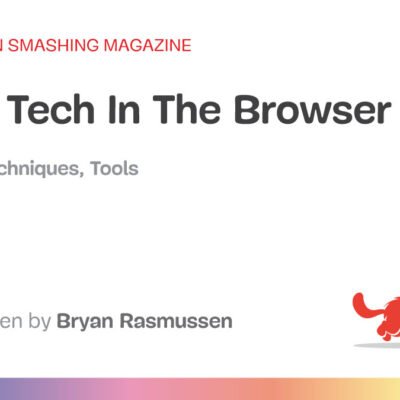
It was a small item in the Asia Times—yet it was anything but small. Chinese scientists announced a breakthrough in an advanced military surveillance device designed to enhance China’s electronic warfare capabilities to detect and disrupt enemy signals at unprecedented speeds—using technology previously deemed unattainable.
Other examples of China’s ambitions include its demonstrated ability to infiltrate some of the most sensitive computer systems in the United States, plans to launch over 1,000 satellites in the next decade to achieve dominance over space, and its development of cutting-edge hypersonic missiles ready to deploy.
In today’s rapidly evolving geopolitical landscape, the United States finds itself in a race against time. The People’s Republic of China (PRC) has emerged as a formidable competitor and potentially dangerous adversary on multiple fronts and across multiple domains—and underlying it all is China’s relentless pursuit of technological dominance.
China is prepared to use that dominance to not only pursue its long-term goal of reabsorbing Taiwan into the Mainland but also establish itself as the preeminent power in the Indo-Pacific—and from that base, challenge the United States over who will set the rules for the global order in the post-Cold War world.
As we navigate this era of great power competition amid the specter of a new cold war, we cannot afford to be complacent. The challenge to our national security is urgent.
The objective is to deter a conflict with China and maintain peace and stability in the Indo-Pacific region. Effective deterrence requires greater speed, deeper innovation, and more fulsome collaboration than exists today.
To stay ahead, we must employ a vigorous whole-of-nation approach to leverage the considerable strengths of the private sector. Peace Through Strength, President Ronald Reagan’s brilliant articulation of the challenge in the late 20th century, must also be Peace Through Speed in a 21st-century context.
Military superiority is no longer determined solely by the size of our arsenal and number of forces. The battlefield of the future will also be defined by communications, cyber, artificial intelligence, hypersonics, and other emerging technologies whose development cycles operate on quarterly, monthly, or even weekly updates.
The private sector is inherently designed to make, iterate, and innovate at a rapid pace. Think about how quickly consumer electronics like smartphones evolve. We can update our personal devices every year to keep up with the latest advancements. Why should our approach to national security be any different?
To help our country compete at speed, U.S. businesses must come off the sidelines. Industry must simultaneously encourage dialogue between our country and China and help our nation strengthen its defenses to make these dialogues productive. I have spoken to several tech CEOs who understand the gravity of the moment and they are ready to join an all-of-nation approach.
A critical part of this transformation rests squarely with the Federal Government. Speed was less important in past acquisition systems because large weapons platforms were intended to last decades. We still fly B-52 bombers today, nearly 70 years after they were first introduced, and an aircraft carrier is designed with a 50-year lifespan in mind.
A redesigned acquisition system will create incentives for industry to reach outcomes faster, tailor commercial technologies more quickly for government use, and invite companies to invest differently than they do today.
An equal if not more profound transformation must occur across the private sector in three ways if U.S. businesses are to meet this moment and prevail.
First, we must be willing to talk about and prioritize national security unapologetically, and to make this clear to our teams. You may be surprised by how much this resonates across our country—for every employee who may disagree, there are tens or even hundreds (including every Veteran and every immigrant I talk with) who will want to join this mission.
Second, it is imperative that we make investments proactively, even in the absence of complete budgetary clarity, to enable swift scaling of solutions. While the political dysfunction in Washington poses unnecessary headwinds, successful companies know how to adeptly navigate and mitigate challenges. Certain political risks can be minimized, particularly when technologies, such as cybersecurity and space communications, are naturally strengthened by dual use in both the private and public sectors.
And third, we must team across traditional boundaries to co-create solutions that none of our companies can realize alone. We have begun to do this with several technology companies. It is hard to work together differently, especially with competitors, but the payoff to me is clear: I am seeing the innovation cycle cut from years to months and even weeks.
When the private sector joined the Arsenal of Democracy in World War II and turned from making automobiles, refrigerators, and children’s toys to tanks, ships, and aircraft engines, our warfighters became better supplied and better equipped and won the war. Industry transformed for the greater good.
Forging a lasting peace in the Indo-Pacific region requires another such transformation, and Booz Allen is committed to leading the way together with other like-minded companies. We are prepared to support our nation and government in new and unconventional ways to meet this moment and create a collaboration template that can go beyond national security—to climate, infrastructure, and healthcare.
By harnessing the ingenuity of the private sector and partnering with our government in new ways, we can achieve Peace Through Speed—rising together as a nation to usher in a new era of peace and stability for generations to come. The time to act is now.
More must-read commentary published by Fortune:
The opinions expressed in Fortune.com commentary pieces are solely the views of their authors and do not necessarily reflect the opinions and beliefs of Fortune.





